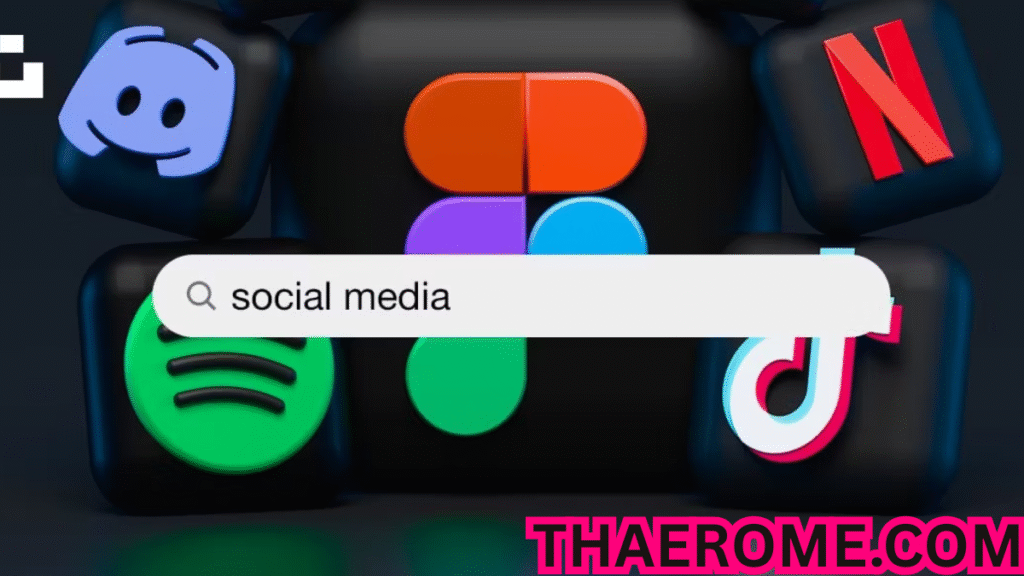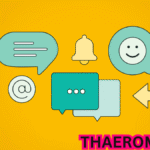Introduction to InfluencersGoneWild
I Fluencersgonewild In the ever-evolving realm of social media and digital marketing, a term has recently gained widespread attention — InfluencersGoneWild. It symbolizes the current transformation of influencer culture, a phenomenon that blends raw content, boundary-pushing creativity, and digital rebellion. As online personalities strive for authenticity, the line between curated content and unfiltered reality becomes increasingly blurred. InfluencersGoneWild is not just a phrase but a reflection of how far influencers are willing to go to remain visible and relevant in a saturated market.
The phrase has also generated controversy, admiration, curiosity, and I Fluencersgonewild sometimes concern. Whether seen as a movement, a platform, or a meme, its significance lies in how it challenges traditional ideas about online fame, personal branding, and digital monetization.
The Origins of InfluencersGoneWild
The term InfluencersGoneWild likely draws inspiration from previous cultural trends where celebrities or unknown individuals showcased unexpected behaviors to grab attention. With the explosion of influencer marketing and content creation, many influencers began adopting more unfiltered, unedited approaches. Instead of polished feeds filled with high-end filters, staged photos, and corporate sponsorships, these creators began offering content that is wild in nature — sometimes outrageous, sometimes honest, often controversial.
This shift mirrors broader societal changes. The audience is growing weary of overly manicured lives. They now crave truth, even if that truth is raw, imperfect, and at times chaotic. InfluencersGoneWild capitalizes on that demand by shedding the façade and embracing candidness — whether that comes in the form of bold storytelling, behind-the-scenes drama, or real-time mistakes.
How InfluencersGoneWild Redefines Online Persona
The idea behind InfluencersGoneWild is that influencers are breaking free from their traditional roles as polished product endorsers. Instead of posting routine lifestyle vlogs or beauty tutorials, these influencers are tapping into the power of unpredictability. Their content becomes a form of entertainment not because it’s perfect, but because it’s real. Followers are not just fans; they become part of a journey that is unpredictable and unscripted.
The influence of such creators lies in their ability to make followers feel like insiders. When an influencer appears vulnerable, flawed, or emotionally raw, the connection with their audience deepens. InfluencersGoneWild promotes a persona that is spontaneous and even chaotic, but deeply human. This authenticity, or the performance of authenticity, often garners higher engagement than curated content ever could.
The Impact on Branding and Marketing
InfluencersGoneWild represents both a challenge and an opportunity for brands. Traditional marketing models rely on control and predictability. Companies invest in influencers expecting them to uphold brand values. But when influencers “go wild,” that control is lost. They may speak candidly, react emotionally, or share controversial opinions — all of which can become liabilities for brands with strict reputational standards.
However, savvy marketers are learning to adapt. Some see this trend as a chance to access younger, more engaged audiences who value authenticity. Brands willing to take risks might partner with these unfiltered influencers to reach demographics that traditional advertising cannot. This strategy is not without hazards, but the potential payoff in virality and brand awareness is substantial.
Controversies Surrounding InfluencersGoneWild
With unfiltered content comes controversy. Some influencers cross lines in their quest for attention, leading to public backlash. Whether it’s through inappropriate behavior, offensive language, or risky stunts, the “wild” part of InfluencersGoneWild often includes material that may offend or upset. Critics argue that such content damages the credibility of influencers and contributes to a toxic online culture.
Moreover, issues like misinformation, exploitation, and mental health concerns often arise. Influencers who “go wild” may experience burnout or face cyberbullying. The internet never forgets, and moments captured in the heat of passion or distress can come back to haunt them. Additionally, young audiences may emulate risky behaviors, leading to further societal scrutiny.
The Role of Platforms and Algorithms
Social media platforms play a central role in fueling the InfluencersGoneWild trend. Algorithms prioritize engagement — likes, shares, comments — often rewarding controversial or emotionally charged content. When an influencer posts something shocking or offbeat, the platform amplifies it. This visibility leads to more followers, higher engagement rates, and increased income from brand deals or platform monetization.
However, these same platforms are also trying to impose moderation policies. Content that violates community guidelines may be removed, and accounts can be banned. Influencers tread a fine line between engagement and suspension. This dynamic creates a high-risk, high-reward environment where going “wild” may either catapult a creator to fame or lead to cancellation.
Psychological and Social Effects on Influencers
Living in the public eye and constantly trying to outperform past successes can take a toll. InfluencersGoneWild is not just a career choice; it becomes a lifestyle. The pressure to stay relevant can result in stress, anxiety, or even identity loss. Many influencers have spoken openly about feeling trapped by their online personas, unable to separate their private selves from their digital characters.
The cycle of content creation, reaction, and backlash can be exhausting. While some thrive on chaos and controversy, others crumble under the pressure. Mental health support, digital detoxes, and therapy are increasingly becoming part of the influencer toolkit. However, not all influencers have access to these resources, and some fall through the cracks, especially when their fame was short-lived or built on temporary virality.
The Viewer’s Role in Fueling InfluencersGoneWild
Viewers are not passive spectators in this digital theater. They drive the success of InfluencersGoneWild through their clicks, shares, and reactions. Every like, comment, and retweet adds fuel to the fire. The culture of voyeurism — the desire to witness drama, conflict, or personal downfall — plays a crucial role in shaping the content landscape.
This attention economy is driven by dopamine. Viewers seek content that evokes strong emotional responses — shock, laughter, anger, or awe. Influencers who can deliver those reactions repeatedly are more likely to go viral. Consequently, audiences bear some responsibility in amplifying content that might be harmful or unethical. The demand for raw, chaotic entertainment creates an environment where such behavior is incentivized.
Monetization and Business Models
InfluencersGoneWild is not just a social phenomenon; it’s a business model. Influencers use subscriptions, live-streaming donations, exclusive content platforms, merchandise, and ad revenue to monetize their wild side. The more outrageous or genuine the content, the more profitable it can be.
Platforms like OnlyFans, Patreon, or adult-themed alternatives often see crossover traffic from these influencers. When traditional platforms restrict their content, many creators pivot to spaces that allow more creative freedom — for a price. Audiences willingly pay to access unfiltered, often exclusive material. This creates a decentralized influencer economy, where creators maintain greater control over their monetization strategy.
Legal and Ethical Implications
The rise of InfluencersGoneWild has triggered legal and ethical debates. Questions around consent, intellectual property, online harassment, and age-appropriate content come into play. Influencers must be careful about what they share, especially if others appear in their content without consent.
Additionally, advertising regulations are tightening. Influencers must disclose sponsorships, avoid misleading claims, and comply with digital advertising laws. Those who “go wild” may unknowingly breach legal boundaries, exposing themselves to lawsuits or fines. There’s also the ethical question of exploiting personal trauma or fabricated drama for views and revenue.
The Future of InfluencersGoneWild
The trend shows no sign of slowing down. InfluencersGoneWild reflects a larger cultural shift toward transparency, autonomy, and creative rebellion. While it has its downsides, it also represents a breaking away from corporate influence and staged perfection. Creators are reclaiming their narratives and challenging what it means to be influential.
In the future, we may see more hybrid models of influence, where raw content coexists with professionalism. Platforms might adapt by offering more flexible moderation tools or monetization models. Brands will continue experimenting with edgy creators, and audiences will remain hungry I Fluencersgonewild for authenticity. Ultimately, InfluencersGoneWild may evolve into a new form of storytelling — unfiltered, immersive, and deeply personal.
FAQs About InfluencersGoneWild
What does InfluencersGoneWild mean?
InfluencersGoneWild refers to a trend where social media influencers produce unfiltered, raw, and often controversial content that deviates from polished and curated norms. It symbolizes a push toward authenticity, unpredictability, and freedom of expression.
Is InfluencersGoneWild a specific website or platform?
While the term may be associated with certain platforms or domains, it primarily represents a broader cultural and content trend among influencers, rather than a singular website or service.
Why do influencers choose to go “wild” in their content?
Influencers may embrace wild or unfiltered content to stand out, gain more engagement, express their authentic selves, or break free from brand-imposed limitations. Such content often performs well in terms of reach and virality.
What are the risks involved for influencers who embrace this trend?
Risks include public backlash, platform bans, mental health struggles, loss of brand partnerships, and legal issues. Going “wild” often involves walking a fine line between creativity and controversy.
How do audiences contribute to this trend?
Audiences play a significant role by engaging more with raw, unfiltered content. Their emotional responses and viral sharing patterns amplify the visibility of such influencers, making them more popular and profitable.
Are there ethical concerns related to InfluencersGoneWild?
Yes, ethical concerns include exploitation of personal trauma, spreading misinformation, inappropriate content for minors, and encouraging risky behavior. Transparency, responsibility, and consent remain critical issues.
Can InfluencersGoneWild be a sustainable career path?
It depends on the influencer’s strategy. Some manage to build long-term careers by evolving their content and maintaining balance. Others may face burnout or I Fluencersgonewild lose relevance quickly. Sustainability requires adaptation, emotional resilience, and diversification.
Will this trend continue in the future?
Most likely, yes. As digital audiences seek more real and immersive experiences, influencers will continue experimenting with bold, wild, and unscripted content. However, the form it takes may evolve with platform policies and audience preferences.


